Deborah Kanter first became interested in studying the history of Mexican American Catholicism in Chicago while visiting a Catholic church on the Southwest Side. “It seemed very, very Mexican,” she says. “But when I looked up at the stained glass windows, all the names of the people who donated money to install the windows were Czech. I thought to myself, ‘Wow, what would it have been like to be the first Mexican person to walk into this white, Bohemian community?’ ”
Kanter, a professor of Latino history at Albion College in Albion, Michigan, realized that a similar story must have played out in almost 40 percent of neighborhoods in Chicago, which now has a sizable Latino population. She started looking at how churches serve as places of community and identity for Mexican American immigrants.
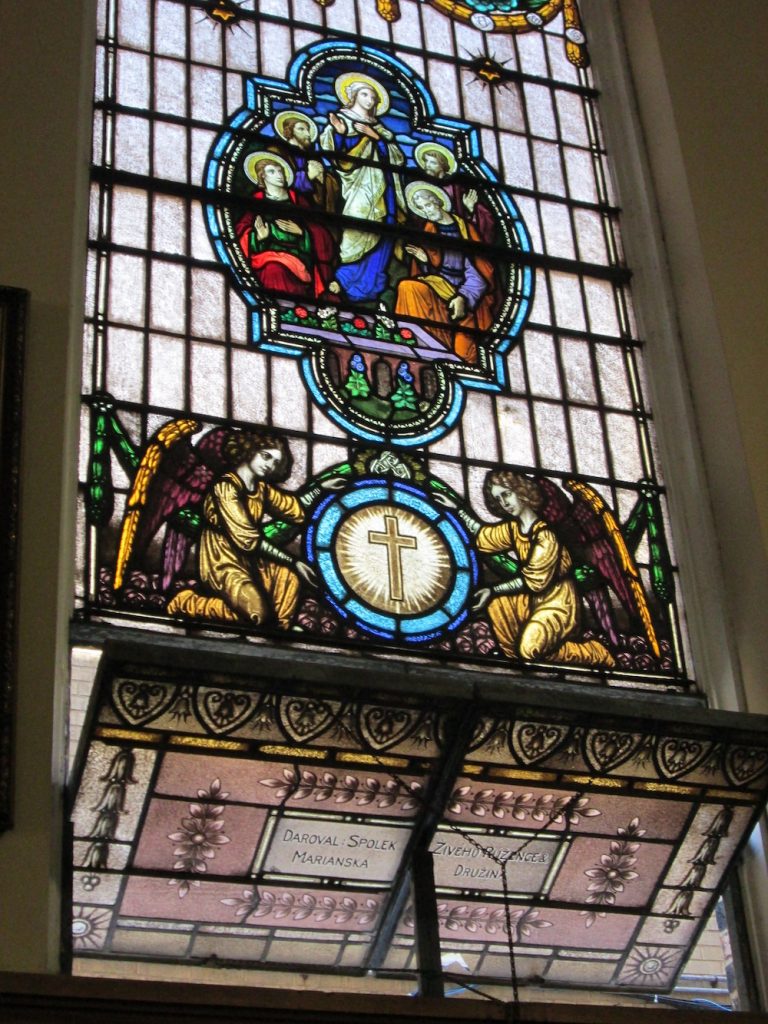
The result was Kanter’s new book, Chicago Católico: Making Catholic Parishes Mexican (University of Illinois Press). The book examines the role of churches in transforming neighborhoods throughout Chicago and fostering community for generations of Mexican Americans. It is the first-ever study of Mexican Catholicism in Chicago and highlights the role of faith in urban development.
What drew Mexican immigrants to Chicago, specifically?
The first wave of immigration from Mexico to Chicago began around World War I. These people were often track workers who worked on the U.S. railroads. Twenty to 40 percent of track workers at the time were Mexican, and if you were working on the railroads you eventually came through Chicago.
Others worked in agriculture in the upper Midwest—Indiana, Michigan, and Minnesota. At the end of the farming season, they would get on a train, which would eventually go through Chicago. People found that they could get more permanent jobs there than in farming. Beyond the railroads, there were other industries that were always hiring, such as the steel mills or different factories.
Chicago employers welcomed this new flow of workers. In 1924 the federal government had majorly overhauled the immigration system. The result was a huge dip in the flow of immigrants from Europe. So all these industries were looking to hire cheap laborers, and the inflow of Mexican immigrants was perfect timing.
A similar major wave of immigration from Mexico in the 1910s and ’20s was happening throughout the Midwest. The single largest employer of Mexican people in the country was the Ford Motor Company.
Where did these early Mexican immigrants go to church?
Before there were any Mexican parishes, there were Protestants willing to reach out to Mexican immigrants. Protestant missionary groups were, overall, more likely to reach out to the growing numbers of Mexicans. Meanwhile, people going to Catholic churches on the Near West Side were coming across various barriers to engagement in parishes. Many Masses were celebrated in European languages: German, French, and Italian. And there was some hostility from these congregations to Mexican immigrants. So although some people baptized their kids at St. Francis of Assisi Parish while it was still German or at nearby Italian parishes, there was no deep engagement in the church.
This changed when the Claretian Missionaries moved to Chicago. The Claretian Missionaries were founded by St. Anthony Mary Claret in Spain in 1849. From Spain they spread their ministry to Mexico and then to Mexican people in Texas, with the aim of serving the growing population of Spanish-speaking Catholics.
The Claretians in Texas noticed that Mexicans were going north. Around 1920 they heard that there were more than 3,000 Mexicans in Chicago, and they began reaching out to the archbishop by offering to minister to the Spanish-speaking Catholics in Chicago and to start bilingual parishes.
At first, the Archdiocese of Chicago was not interested. But the Claretians were persistent. After a couple years of pushing, making connections, and networking, they had permission to send several members of their order to Chicago.
Why did it take so long?
I think part of it was just that Mexicans were new: No one knew what to make of them. There also weren’t that many, and people didn’t know if they were staying. So the archdiocese was perhaps more concerned with how to minister to the huge ethnic groups like Poles and Italians.
The other hesitation may have been that Archbishop Mundelein had decided that Chicago was done with national parishes, or parishes that served a specific ethnic group. His mindset was that immigrants could have a national parish for a generation, but then they needed to learn English and join a local parish. So he hesitated to open any new parishes intended specifically for a new national group. And, indeed, the two Mexican parishes in Chicago were the last ones. When Puerto Ricans arrived in Chicago after World War II, nobody reached out to them or opened up national parishes for them.
Was there anything unique about the development of Mexican American Catholicism in Chicago?
I think Mexican immigrants arriving in Chicago were very fortunate, because it was such a Catholic city. Within two years of seeing growing numbers of Mexicans arriving in the city, the archdiocese and the Claretian Missionaries had opened up two Spanish-speaking parishes.
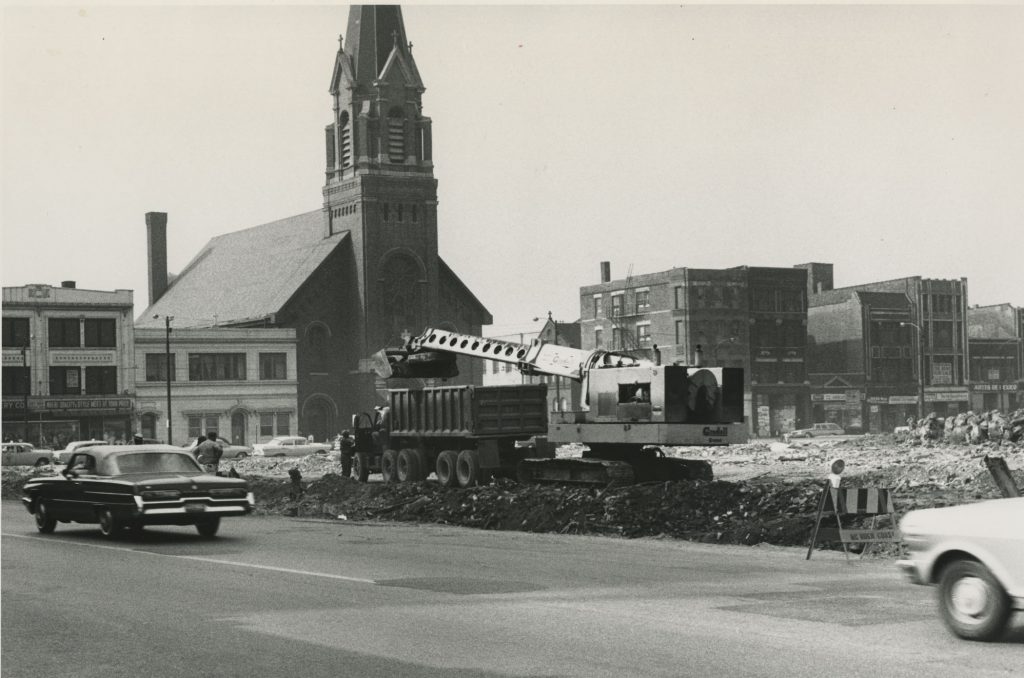
This was a slower process in other cities and was definitely not as well supported. For example, there was one Mexican church in Detroit that opened in 1924, I believe: Our Lady of Guadalupe. It was a frame building, and I don’t know that the archdiocese paid anything to keep it open. It was destroyed during highway construction in the 1940s.
But in Chicago, Our Lady of Guadalupe, another Claretian parish in South Chicago, was a brick-and-mortar building built specifically for Mexican Americans. St. Francis was taken over from a predominantly German American congregation, and the Mexican congregation inherited a church, rectory, convent, and school. There was a lot more infrastructure and support.
How did St. Francis go from being a German parish to a Mexican one?
The Claretians took over an old German parish that was on the verge of dying. The neighborhood was becoming less German and more African American (few of whom were Catholic). The parish had very few baptisms and was having a hard time bringing in any money.
The Claretians very quickly began doing outreach to the Mexicans who lived in the neighborhood. The first December they were at the parish, they celebrated a novena to Our Lady of Guadalupe. They also set up a few Spanish-language parish societies.
Over the course of the 1920s, more and more children at the St. Francis school were Mexican or Mexican American. There were a few old German families who couldn’t afford to leave the neighborhood and still had ties to the parish, but the majority of members were immigrants.
The Claretians also made sure to offer help to parishioners during the Great Depression. They worked with St. Vincent de Paul and brought school tuition down to almost nothing. Then, in the 1940s, they began to train American vocations: priests who are raised in the United States but who speak Spanish and can minister to the next generation of Catholics.
Although immigration declined in the 1930s because of the Depression, people began to come back to Chicago during World War II. St. Francis became the place where people could get married in Spanish, children could get baptized in Spanish, and parishioners could confess in Spanish.
What was it like to be Mexican American and Catholic in Chicago in the 1940s?
Being Catholic in Chicago wasn’t just about going to church on Sunday. In my book I describe St. Francis as a 24/7 parish. People could always call or ring the doorbell, either at the parish or rectory, and somebody would help. People knew the priests and the sisters; they lived right in the neighborhood.
Kids played on parish sports teams and went to dances at the school gymnasium. Parish clubs were a huge thing throughout Chicago.
People were also at church a lot. They went for social and devotional reasons. I think this is a kind of Catholicism that’s hard for people to relate to today, almost three generations later.
People in the 1930s–1950s went to church a lot, whether they were Mexican American or not. People attended novenas on a regular basis. I think part of it is that, for women especially, it was a sanctioned reason to leave the house. You could leave your kids and say, “I’m going to the novena for an hour to say the rosary with my friends.” This was an important community and social event as well as a religious one.
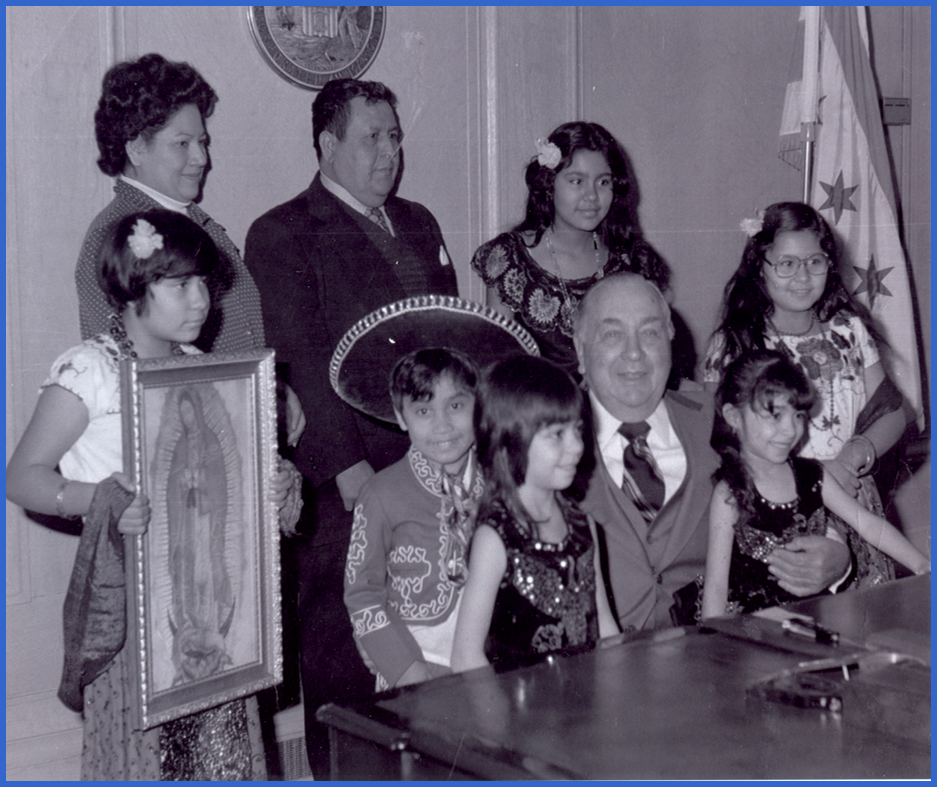
People were supposed to take communion as many times a week as they could, so they would go to Mass every morning before work or after they dropped their kids off at school. Especially for Mexican immigrants, many of whom came from rural areas without resident priests and who couldn’t take communion on a regular basis, it was exciting to be able to participate in the sacraments whenever you could.
One of my favorite parts of working on my book was learning about second-generation Mexican American young adults during World War II. They printed a 12-page, monthly, bilingual newspaper. I had the chance to read these newspapers, and they provide a fascinating snapshot into what it meant to be Mexican, American, and Catholic in Chicago during this time. This generation of people coming of age in the 1940s felt profoundly proud of being Mexicano, of being Chicagoans, and of being Catholic. And I think it was places like St. Francis of Assisi and Our Lady of Guadalupe that really allowed that to happen.
This period was really kind of a peak moment for St. Francis of Assisi Parish. Mexicans made up 25 or 30 percent of the neighborhood, and there was a strong sense of community. The parish was growing. They built a new gym building. They were very connected with their priest and with Chicago institutions like the St. Jude Police League, which was also affiliated with the Claretians. I think these people felt like they really belonged here. But that began to change in the 1960s.
What changed?
In the 1940s and ’50s the Mexican population continued to grow. The Near West Side was the largest Mexican community, and it housed 40,000–50,000 people. It got hard to find rooms to rent. The buildings were some of the oldest housing in the city, and many of the flats had only cold water. After World War II, people wanted to have a hot shower or bath in their home, so newlyweds started looking outside the neighborhood.
This trickle of people moving out sped up in the 1960s, when the city decided that the Near West Side would become the site of the new University of Illinois at Chicago (UIC) campus. Entire residential neighborhoods in the area were destroyed between 1960 and 1965, and many of the Mexican Americans who lived in the area moved to other parts of the city, such as Pilsen, which even today is predominantly Mexican American.
People were worried that St. Francis would have to shut its doors—that if there was no neighborhood, there would be no parish. But the reality was that people came back every Sunday. I think they still have eight Masses every weekend even today.
Today, the church looks different. The school is gone. There’s a new rectory that was built in the 2000s. There is a building that used to be a Catholic Youth Organization gym that was built in the late 1940s. And everything is completely surrounded by the UIC campus.
St. Francis today is a different kind of parish than it used to be. It’s no longer a 24/7 parish; it’s more about the weekend. People come from out of the neighborhood, attend Mass, and bring their children to catechism class. They hang out at the church for hours on the weekend. The Mexican businesses are all gone, but there are a lot of food stands around the church, and you can buy things like tamales, tacos, and mangoes on a stick.
But people still refer to St. Francis as “the Mexican cathedral.” It’s like the mother church of Mexican people in Chicago. Every Mexican American has attended baptisms and weddings there. Even though the neighborhood doesn’t exist anymore, there’s a sort of love of neighborhood and parish that persists.
Image: Sanctuary, St. Francis of Assisi Church, 1948. Photo: Chicago Architectural Photographing Company. Courtesy of the Claretian Missionaries Archives USA-Canada.
This article is also available in Spanish.


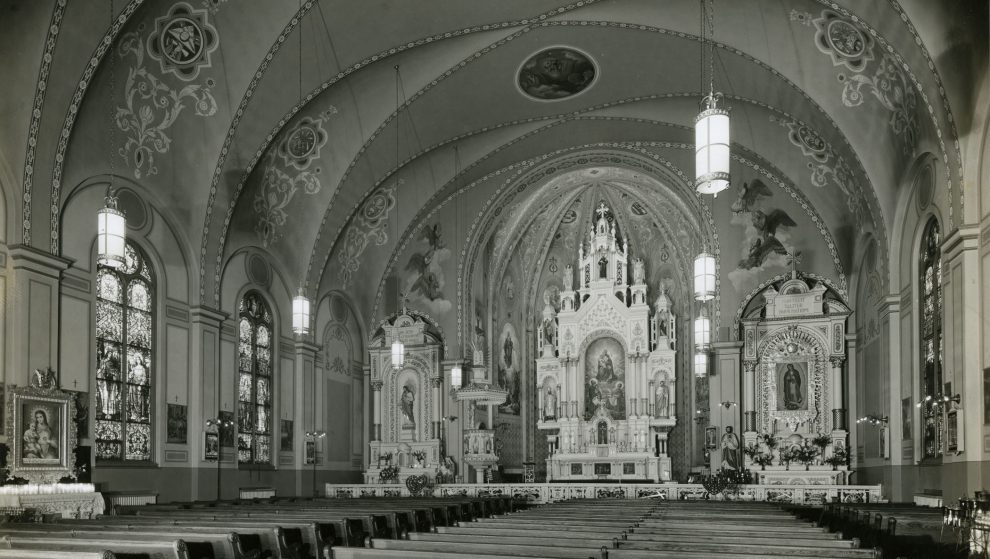





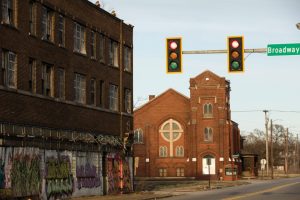





Add comment